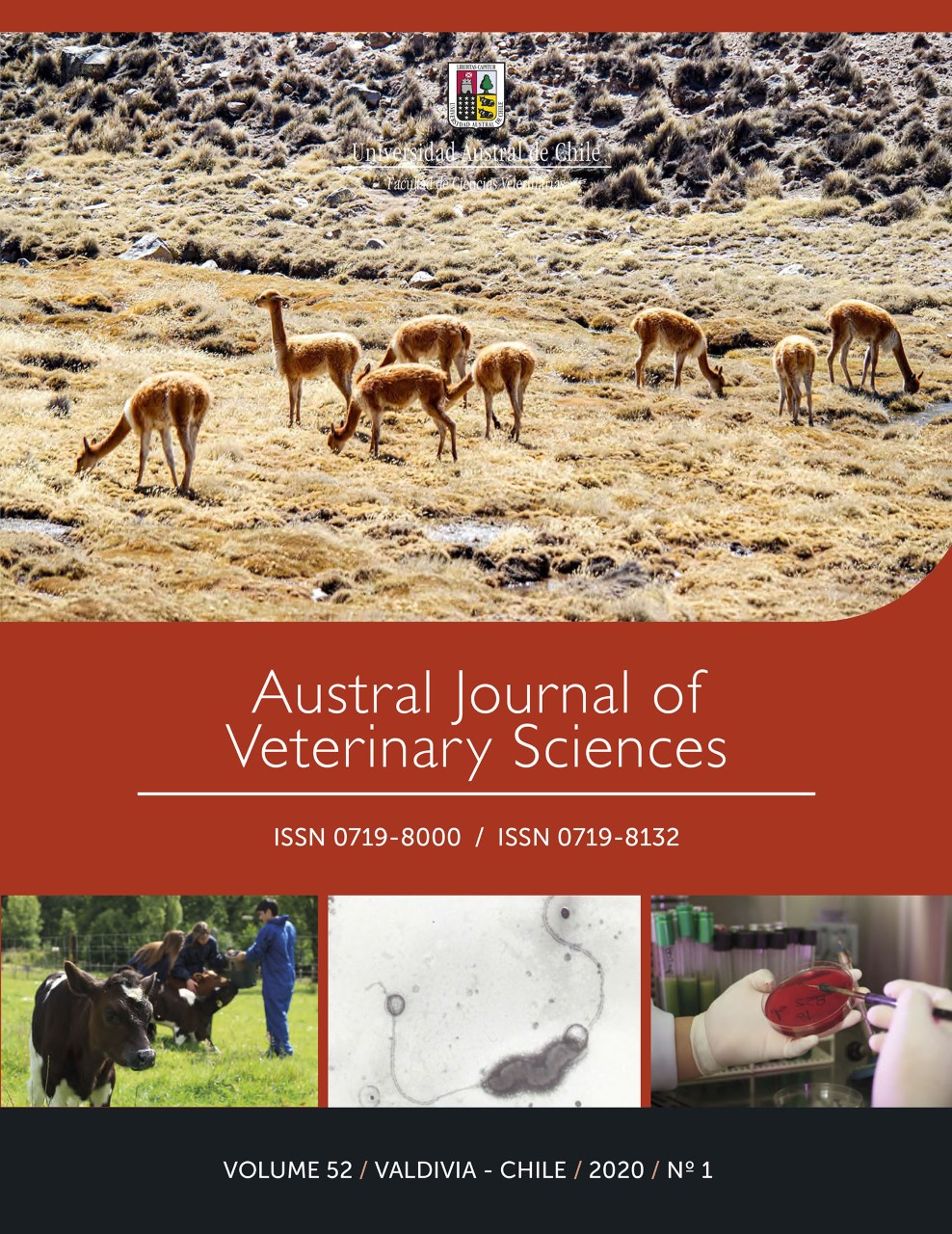Serological survey of bovine viral diarrhea (BVDV-1), brucellosis, and leptospirosis in captive white-lipped peccaries (Tayassu pecari) from the Midwest region in Brazil
Main Article Content
Abstract
The present study was conducted to assess the occurrence of anti-Brucella sp., anti-BVDV-1, and anti-Leptospira spp. antibodies from captive white-lipped peccary (Tayassu pecari). A cross-sectional survey was performed testing 100 serum samples collected in a commercial breeding herd. All samples were submitted to the acidified antigen test (AAT), virus neutralization test (VNT) and microscopic agglutination test (MAT) with live antigens. None of the samples tested agglutinated in the AAT screening test. In the VNT, 28 samples presented a cytotoxic effect and were excluded from the evaluation. For BVDV-1, only one sample (1/72; 1.38%) was positive, with antibody titers of 40. For leptospirosis, 9% (9/100) of the samples reacted to at least one of the 24 serovars tested, with 8% (8/100) positive for serovar Patoc and 1% (1/100) for serovar Grippotyphosa. The maximum titer observed was 100. The identification of antibodies against the serovars Patoc and Grippotyphosa suggests that the sampled individuals have been exposed to the pathogen at some point during their lifetime. Regarding BVDV-1, this may be the first serological survey to describe seropositive samples in tayassuids.

